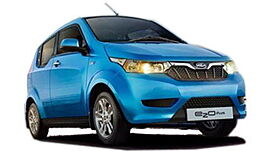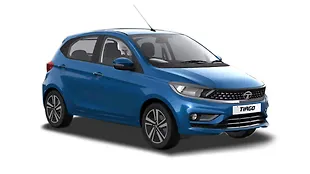Bengaluru
“550kms in the Mahindra e2oPlus car? Are you kidding me? It runs a maximum of 140 kms in one charge, that too in ideal conditions. You must be crazy!” exclaimed my colleague Venkat when I told him what I was about to embark upon. And yes, crazy as it sounds, I had already accomplished a 350km long round-trip in the same car (you can read about that here). So I was quite confident of returning triumphant from this one as well.

Traffic snarls aside, Bengaluru is the best city in India to live in if you have an electric car and that is because of the infrastructure that has been built by Mahindra Electric, India’s only electric car maker. Bangalore also houses the factory where the e2oPlus is built and naturally it had to be the starting point of our longest journey yet in the Mahindra e2oPlus. After enjoying the tea estates in Kerala, we our next destination was the coffee estates in Chikmagalur. According to the route that we had planned, we would first hit Yediyur, spend the night there, then head to Hassan the next morning and then finally arrive at the coffee estates of Chikmagalur the next day. The entire trip and back to Bengaluru would cover a distance of 550kms.

Yediyur
All great voyages seem improbable, always against the odds. This time, it was the logistics that delivered us the car a whole day late. Nevertheless, we did manage to set out the next day to Yediyur, a nondescript town with just about 100 households. Little did we know that we would be on a wild goose chase of finding a 16A power plug to charge the car after this 105km drive and all I had with me was my faith in humanity!

Mahindra Kochi charged 100 per cent before it left and helped us save precious hours. We reached Yediyur and the odometer read 112 km with a DTE of 31kms and SOC 34 per cent. The four lane highway meant that I could drive at a steady pace, ensuring I make every ampere count and in the process I achieved something special. I exceeded Mahindra’s claimed range of 140kms by three but that is not all. Since the SOC percentage read more than the DTE, this meant that I could easily go beyond 150 had I continued to press ahead. But Yediyur had something bigger in store.

This little town is known for its centuries-old Siddhalingeshwara temple. Built in stone in typical South Indian style, the temple stood just hundred metres away from a supposedly massive lake. When we reached the lake, it was a mere puddle, not even as big as a large swimming pool. But the view from that position was unbelievable.

The lake bed was lush green and in the middle of it stood the Indian version of the Stonehenge. Called the Mandapam, this was a four-pillar structure of pure stone, each one weighing at least a couple of tonnes. There were more pillar-like stones strewn around and three comparatively new pillars as well. With my limited (absolutely zero) proficiency in Kannada, we couldn’t get any details about the vintage of this structure, but it certainly pre-dates the temple.

The evening turned out to be the most challenging yet, as after three hours of scouting around the hamlet and begging for favours, we still had no charging point and by now, the SOC had dipped below 20. Finally, I headed to the local police station and the constable turned out to be our saviour. He directed us to a wedding hall as it would certainly have the required 16A socket. The manager there agreed to let us charge the car to full and arranged lodging for us as barter.
Hassan
Next stop was Hassan, 90 kilometres away. This town was an important pit stop on our schedule because it has a Mahindra dealership and a service station, which means we will get all the help we need. We set out in the morning on the well-paved highway and after the way the Mahindra e2oPlus had performed yesterday, I had no worries. I wasn’t the calculating, cautious self I had been for the past few days. I was quite enjoying my drive on this cold windy morning. That weather was god-sent after the scalding summer we had left behind in Mumbai.

I was cruising in the 60s now, keeping the economy bar two or three pointers below High with the occasional use of E-gen while going downhill. The car just ate up the miles and it was with satisfaction that we stopped for breakfast at a way-side eatery. The chilly morning winds had quite stirred up our appetites and we sat down to consume a hearty meal, including the largest idlis I had ever seen. Fluffed up to the size of a papad each, these idlis were tender and combined with the piping-hot sambhar, it was a meal to remember. After a swig of coffee, we were back on the road again.

The highway made for a pretty picture, lined with extensive coconut groves on either side and the occasional palms and betel nut trees. The windmills in the back ground and the mountains towering high above them made this a picture worthy of a wallpaper. We reached Hassan in no time and Mahindra dealership provided us with all the support. With the car hooked up to the grid, we headed in to the city to sample the local cuisine. At Hassan, we had kola urundai (meatball curry) with akki rotis (made of rice).
Chikmagalur
Chikmagalur is known for its coffee and cardamom. Set in the shadows of the mountains, it has sprawling coffee estates all around marked with their tall silver oaks and the shabby coffee shrubs blooming in the shade. But before we reached there, we decided to visit the Chennakeshava temple in Belur on the way.

The Chennakeshava temple was built in the 11th century by the Hoysala dynasty that ruled the southern Deccan plateau. Built entirely in stone, the monument has been fairly well maintained by the Archaeological Survey of India. The temple complex houses three more temples in the south, west and north of the central Shiva temple built over the years by the Hoysala kings.

The British began growing coffee in India in the mid-1800s and since then Chikmagalur has been on the coffee map. We bought some freshly ground coffee from Panduranga Coffee traders, one of the oldest coffee dealers in Chikmagalur with a legacy of over four generations.

It was a quaint old shop when I had first visited about five years ago, but since then it has expanded into a modern structure. Chikmagalur also houses the coffee museum, the only one of its kind in India. We spent the evening walking through the coffee estates while the e2oPlus was plugged in at the Mahindra dealership.

Home run
I left Chikmagalur high as an energy bunny after the endless cups of coffees I had the day before. I was targeting more than 150kms today, which is more than what Mahindra prescribes for the e2oPlus P8 – armed as it is with a 72V battery pack and advanced electronic wizardry.

With the car fully charged up, I set out at a steady pace, easing my way with the throttle and we whizzed through the 70km drive to Hassan within a couple of hours. The e2oPlus didn’t miss a beat and was left with 62 per cent SOC. We had a quick three hour refill at Hassan and we were on course for my target to hit Yediyur before sunset. The 92 km dash was a cakewalk with the batteries fully charged. Wanting to find out really how far I could take the e2oPlus in a single charge, I maintained a steady throttle, keeping the efficiency meter at a single bar below High.

I had reached Yediyur in just two and half hours and believe it or not, I was still left with 57 per cent SOC and a distance to empty of 61 km. That’s right, it totals up to 153 km, 13 more than the e2oPlus’ prescribed range! We almost felt tempted to disregard the computers and continue with the home run to Bengaluru, which suddenly seemed achievable. Driving 270kms in a day on an e2oPlus would probably be one for the record, but then, the danger of being stranded in the middle of the highway loomed large.

So we chose to spend the night at Yediyur instead and recharge the batteries again. Besides there was that incredible sunset to soak in again.

The final stretch of 100kms from Yediyur to Bengaluru turned out to be a breeze. And like the ancient mariners who got philosophical at the end of their great voyages, I too had an illuminating thought. The e2oPlus is like an early smartphones – the ones that were laden with technology but did not have the network infrastructure to make the most of them. But as the technology advanced, the smartphones could do so much more and with better batteries, it could last longer as well. We just need to give these EVs some time to mature and when they do, you will probably queue up to buy them like we do with smartphones today.

It is not over yet, for we have one more voyage to undertake and for that I will hand the baton over to my first-mate Venkat, who will be beginning an equally crazy ride of his own from the place where India’s EV policy is now being forged – New Delhi.
Words: Omkar Thakur
Photography: Vipurva Parikh






























